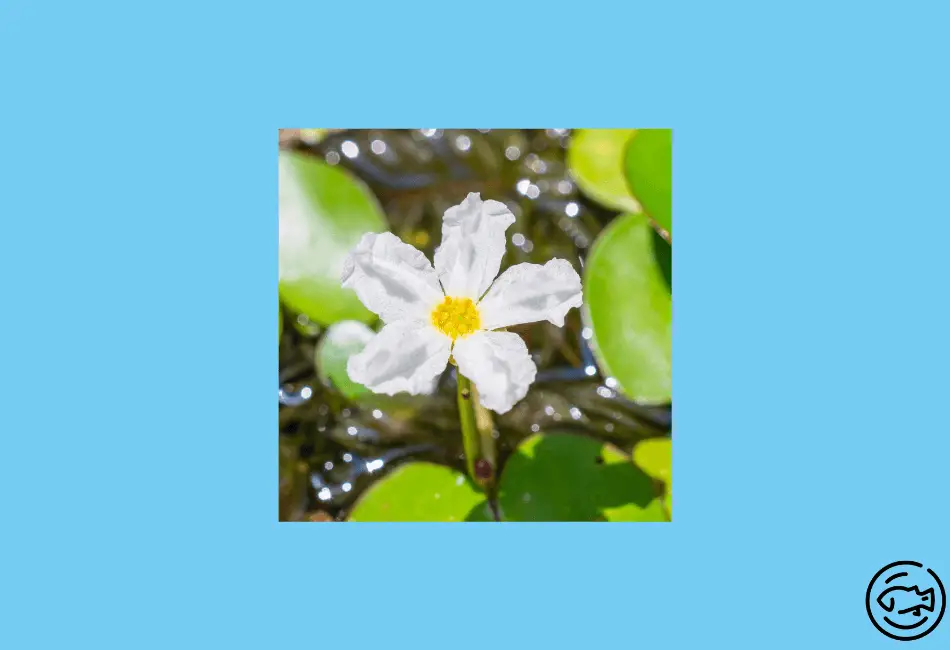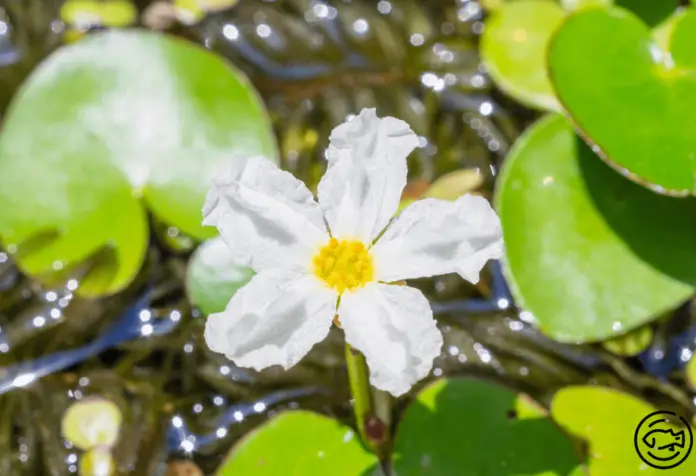The Nymphoides Aquatica, commonly called the Aquarium Banana Plant, Banana Lily, or Heart Water Lily, is indigenous to the Southeast United States and can be found in various aquatic environments such as ponds, lakes, and rivers.
The Aquarium Banana Plant will flourish in a temperature range of 68 to 82°F and water parameters of pH 6.0 to 7.5 and has become a popular addition to many aquariums.
Although the Aquarium Banana Plant is considered endangered in its natural surroundings, it is still available for purchase through numerous online retailers and pet stores.
Rather than being harvested directly from their native ecosystems, all commercially sold Banana Plants for Aquarium are propagated from cuttings taken from other well-established specimens.
This practice ensures that the natural habitats of these unique and beautiful plants remain undisturbed.
Aquarium Banana Plant Facts
Easily recognizable by their cluster of tubers situated just above the soil when planted, Aquarium Banana Plants derive their charming name from their resemblance to a small bunch of unripe bananas. These tubers function as nutrient reservoirs for the plant.
It’s crucial to understand that the tubers should remain above the soil, as they are not part of the plant’s root system. Burying the tubers may cause them to rot, ultimately killing the Aquarium Banana Plant.
Mature Aquarium Banana Plants develop lengthy runner stems adorned with lily pad leaves that rest on the water’s surface. Exhibiting shades of green to dark green, some leaves may even display a mottled red hue.
Occasionally, the plant produces petite white flowers that float atop the water.
The roots of Aquarium Banana Plants emerge from the plant’s stem and extend down into the substrate, anchoring the plant securely. It is common for the roots to be visible, appearing white or light green.
Initially white, the roots maintain their color when embedded in the substrate. Those that develop a greenish tint have adapted to the water flow in the tank and have become more resilient to their surroundings.
Aquarium Banana Plant Care

Preparing your aquarium for Aquarium Banana Plants is relatively straightforward. These plants necessitate a minimum of two inches of the substrate to anchor their roots, which can consist of soil, gravel, or sand.
When introducing the plant to your aquarium, you may partially bury the tubers up to a quarter of an inch into the substrate until the roots develop sufficiently to secure the plant.
The plant can float just above the substrate for low-flow tanks, where it will develop roots to anchor itself into the soil. However, in higher flow tanks, plant weights might be necessary to keep the plant in the desired location for root establishment.
Aquarium Banana Plants flourish in a tropical temperature range of 68 to 82°F, making them a versatile addition to your aquarium setup. A minimum tank size of ten gallons is recommended for these plants.
How To Propogate Banana Plant For Aquarium
Incorporating a new banana lily into your aquarium is quite easy.
First, ensure that your fish tank has a minimum of two inches of substrate, like aquarium gravel or sand.
Next, choose a spot in the tank with ample lighting and mild water flow.
The banana plant for aquarium stands at six inches tall, and this species can serve as a foreground, midground, or even background plant in a 5-gallon nano tank.
It’s essential not to smother the tubers or banana-shaped roots, which store nutrients. Simply place the plant’s tubers on the substrate’s surface or bury them about a quarter of an inch deep.
If the plant attempts to float away, use rocks or plant weights to hold it down.
If the plant remains unanchored, don’t fret – it will eventually extend long roots to secure itself to the substrate.
How Tall Can Aquarium Banana Plants Grow?
Aquarium banana plants can reach a height of up to six inches, producing numerous leaves that float on the water’s surface or remain submerged.
If you notice that your Aquarium Banana Plant is overgrowing or its leaves obstruct light for other aquatic plants, you can effortlessly trim the plant to the desired size.
Aquarium Banana Plant: Signs of Decline
The leaves of Aquarium Banana Plants are generally green to dark green, occasionally displaying red patches unless the plant is unhealthy.
If the plant lacks sufficient nutrients from the soil, the leaves may turn yellow or brown.
Examining the roots embedded in the soil for rot signs can also provide insight into the plant’s condition.
The plant’s banana-shaped tubers are not always indicative of its overall health. Some owners have noted healthy Aquarium Banana Plant tubers detaching when the substrate meets the plant’s nutrient needs.
In an appropriate environment, the tubers of Aquarium Banana Plants may fall off, dissolve, or vanish. This occurrence should not be a concern if the plant appears healthy otherwise.
Tubers dropping could merely indicate that the plant is receiving adequate nutrients from the substrate.
How To Grow More Banana Plants & Grow Them Faster
Encouraging healthy development in your Aquarium Banana Plant is a straightforward process.
Like many plants, they flourish under high-intensity lighting. Utilizing fertilizers can also stimulate growth.
If you opt to fertilize your plant, it is advisable to do so every three to four months.
Propagating them is simple and allows you to multiply your collection. Just snip off one of the leaves and let it drift in your tank. In time, new roots and tiny leaves will emerge, which you can plant back into the substrate.
This concise care guide should provide a solid foundation for cultivating your first banana lily.
Selecting the Best Aquarium Banana Plant for Your Tank
When choosing your Aquarium Banana Plant, start by examining it for any visible signs of algae. Inspect the leaves, tubers, stems, and roots for any algae growth.
After checking for algae, assess the leaves and tubers. The plant’s tubers are the small “banana-like” tubes situated at the base of the plant.
A healthy cluster of these tubers will appear green, thick, and free from cracks or damage.
The leaves should exhibit a normal shade of green, with older, more mature leaves displaying a darker green hue. Confirm that the leaves have no holes, cracks, or damage around their edges.
The injured leaves of the Aquarium Banana Plant cannot heal themselves, so any damaged leaves will need to be removed. If trimming is necessary, ensure that an adequate number of healthy leaves remain on the plant.



